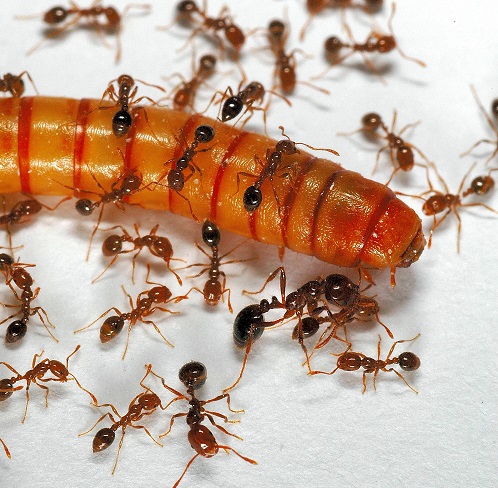New Zealand could dramatically reduce outbreaks of invasive species if it selectively chose its international trade partners, suggests new research.

Reviewing almost 50,000 exotic species border interceptions from the last 10 years, Victoria University researchers have identified the types of countries most likely to be a source of imported exotic invaders.
Read more about the research on Scimex.org.
“We found counties with poor regulation and low political stability pose more of an invasive species risk,” says author Evan Brenton-Rule, a PhD student from Victoria’s School of Biological Sciences.
“If New Zealand carefully selects trade partners based on these factors, we could expect up to nine times less invasive species coming to the border.”
“It’s worthwhile thinking about how international trade deals and a change in trading partners may impact the number of exotic species knocking on our country’s door. There are millions of dollars of control or eradication programmes at stake here, as well as potential biodiversity loss”.
The research is published today in the journal Proceedings of the Royal Society B: Biological Sciences.
The SMC collected the following expert commentary. Feel free to use these quotes in your reporting. Expert contact details are available on Scimex.
Dr Grant Smith, BioProtection Technologies, Plant & Food Research; Program Leader – Effective Detection and Response, Plant Biosecurity Cooperative Research Centre, comments:
“It is well known that international trade is a major pathway for the introduction of invasive species, a point noted in the paper. This study adds another factor to the criteria used to access risk: the governance and development indicators of the source country.
“One challenge for the regulation/ policy systems of importing countries is how to weight this new factor for incorporation into current risk assessments and surveillance strategies for imported goods and products.”
Dr Stephen Goldson, Principal Scientist, Biocontrol & Biosecurity, Agresearch comments:
“Carefully developed science-based biosecurity trade rules have been developed over many years. On the basis of scientific evidence these seek to maintain trade while ensuring biosecurity is protected. This takes a case-by-case approach in the case of contention (e.g. the Australian fire-blight on apples row).
“At first sight at least, the paper seems to indicate that such carefully created diplomatic reciprocity of trade and phytosanitary requirements may be replaced some kind of index applied to exporting nations based on their levels of regulation, forest cover, political stability and adherence to the rule of law.
“While there may be some merit in taking such an observation into consideration, its broad application seems like a very blunt instrument that could greatly narrow New Zealand’s global trading opportunities and distort trade patterns. From an international-citizen point of view, does it mean that poor nations should languish in some kind of trade-vacuum in spite of what may be cost-effective production of valuable products and commodities?”